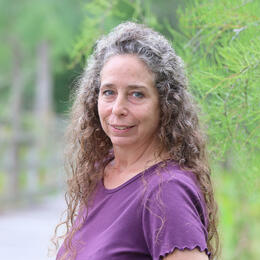The following story was excerpted from 'Corkscrew,' the annual magazine of Corkscrew Swamp Sanctuary.
It is a sunny summer morning at Corkscrew Sanctuary and it feels warm even in the shade. Sally Stein, Director of Public Programs, works up a sweat as she carefully waters down some newly-installed native plants in the Native Plant and Pollinator Garden.
“The area at the entry of the visitor center was very overgrown,” said Stein, wiping her brow. Since the summer of 2017, staff had been looking for a way to enhance the space that hid the Blair Audubon Visitor Center from view. The area offered few resources for birds and pollinators, many of which are becoming imperiled due to changes in our climate in addition to loss of habitat.
Southwest Florida looked very different 100 years ago. Rampant urbanization has transformed natural areas into manicured landscapes with the introduction of turfgrass and ornamental plants. While these transformations may be easy on the human eye, they often leave native species hungry for what has been lost.
Restoring native habitats, even on a small scale, can have big impacts. To inspire nearby homes and businesses to create their own initiatives, as well as teach the public about the importance of pollinators and native plants, water conservation, and small scale clean energy use, staff launched the new garden as part of Audubon’s Plants for Birds initiative.
A grant from the Naples Garden Club made it all possible. The garden mimics many of the habitat types found in the Sanctuary, with species like pond apple, goldenrod, and swamp dogwood. These plants are beneficial to birds and pollinators, as well as numerous other animals, while requiring less water, fertilizers, and pesticides than many ornamental plants introduced to our landscape. A water feature with a solar-powered pump houses emergent plants, small fish, and aquatic invertebrates.
“Even if people don’t have a garden at home, they can still put nectar plants in pots where butterflies and hummingbirds can benefit,” said Stein.
A sculpted pair of Great Blue Herons stands sentry as the garden’s centerpiece, welcoming visitors − human and otherwise − to this little slice of heaven that encourages environmentally sustainable landscaping practices and makes Corkscrew an even better neighbor.




